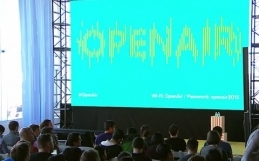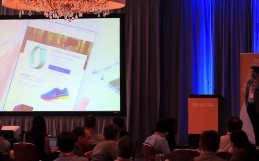LinkedIn was already a mature organisation by any standard when Erran Berger joined in 2009. Six years later, now as Head of Engineering, he has seen the company swell to nearly 7,000 employees during which time he has seen LinkedIn navigate through exponential growth whilst maintaining a stable engineering culture which has been able to solve the challenges which the vast amounts of global traffic have presented.
Alexey Khrabrov caught up with him to find out how the engineering culture at LinkedIn has been so successful during his time there, particularly through a period where so many different new products have been released.
In being asked by Khrabrov about how change is created at such scale, Berger says, “Ultimately making change is something that requires people that want to be champions for that change so, for example, for a very long time we had about 300-350 services in our data centre that powered the LinkedIn experience and we had accumulated an enormous amount of technical debt around our APIs – we were using Spring RPC so it was not language agnostic, the framework itself was pretty nasty and it was really hard to make backwards compatible changes. So a set of engineers decided ‘this has to stop – we actually need to rewrite all of APIs we need to build a new framework that’s gonna help us model our domains much easier and expose those domain models to our clients.’ “
This ownership of challenges by engineering teams at LinkedIn allowed the Engineers to feel invested in what they were doing by drumming up buy in from other people in the business. The scale of change at Linkedin was enormous but the trust in the engineers to be able to deliver served two purposes. To empower the individuals and teams that were working on the projects and as a result, this delivered the best possible outcome for LinkedIn as a technology platform.
The overriding message from Berger is that it is vital for the leadership team to support engineers in creating change in an organisation when needed. The long tail of this is that the scaling of a collaborative culture will follow with a more organic flow.
Another important cultural observation which Berger makes in this interview is about the localisation of objectives in organisations where quite often the objectives of different teams might be in conflict with one another, “I think the way that we resolve these conflicts ultimately is if we start from a place where winning means what is best for the organisation. It’s not necessarily what’s best for me and that’s better than what’s best for you, because you’re on some other team and I have this ego or passion and I know this is right. The reality is that these conflicting incentives and strategies for local winning frequently conflict and we have to work together to resolve those conflicts.”



